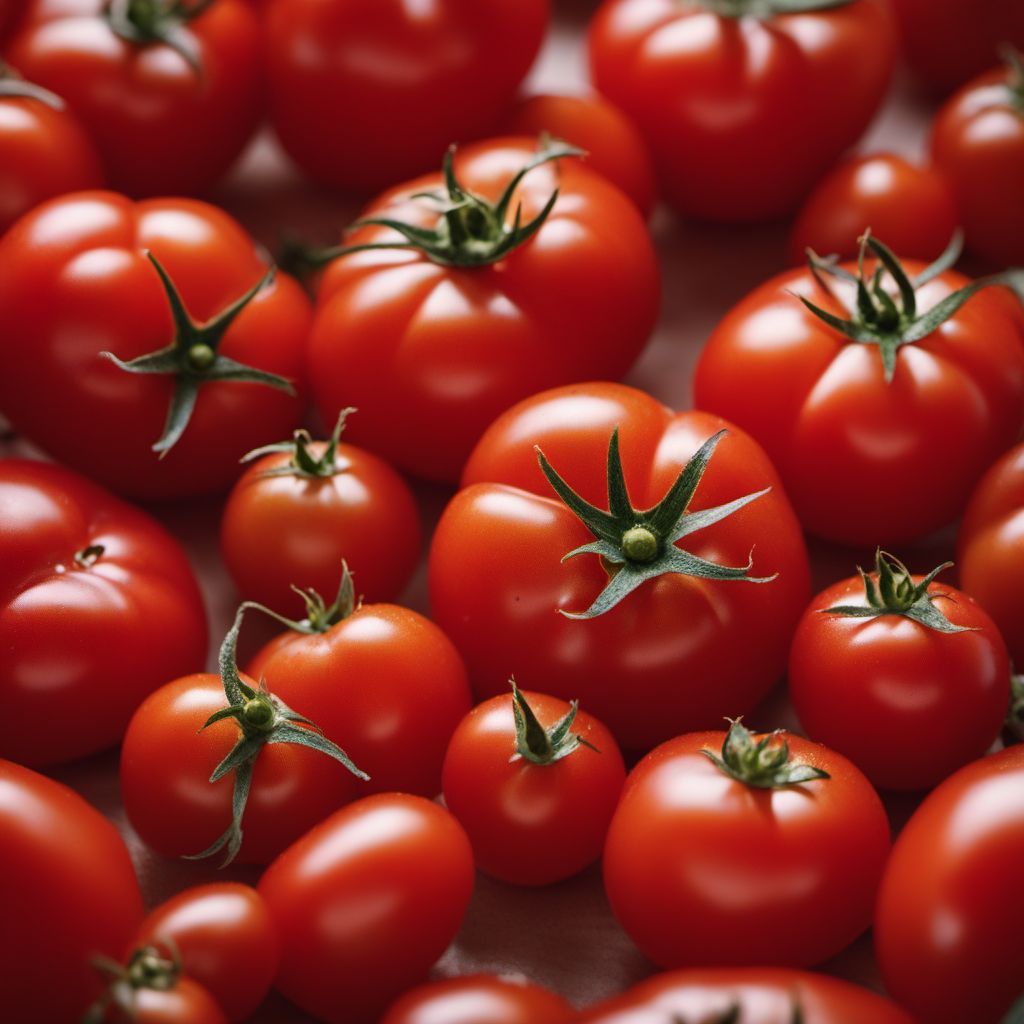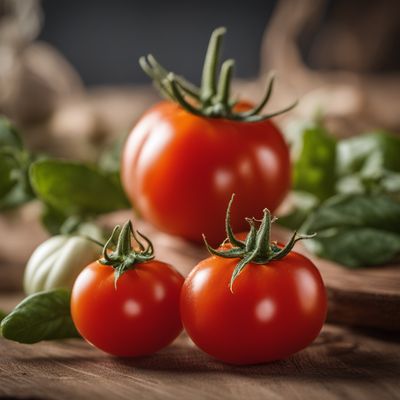
Ingredient
Tomatoes and similar-
The Versatile Gems: Exploring the World of Tomatoes and Similar Ingredients
Tomatoes and similar ingredients, such as cherry tomatoes, heirloom tomatoes, and plum tomatoes, belong to the Solanaceae family and are characterized by their vibrant colors, juicy flesh, and slightly acidic taste. They come in a range of sizes, shapes, and colors, including red, yellow, orange, and green. With a smooth yet firm texture, tomatoes add a refreshing element to dishes and can be enjoyed raw or cooked. Their versatility allows them to be used in salads, sauces, soups, stews, salsas, and even as a topping for pizzas and sandwiches.
Origins and history
Native to western South America, tomatoes have a rich history dating back thousands of years. They were first cultivated by the Aztecs and Incas, who recognized their culinary and medicinal properties. After the Spanish colonization of the Americas, tomatoes were introduced to Europe and gradually gained popularity. Initially, they were considered ornamental plants due to their resemblance to poisonous nightshade plants. However, as their culinary potential was discovered, tomatoes became an integral part of Mediterranean and European cuisines.
Nutritional information
Tomatoes are a nutritional powerhouse, packed with essential vitamins and minerals. They are an excellent source of vitamin C, vitamin A, potassium, and antioxidants like lycopene, which is known for its potential health benefits. With low calories and high water content, tomatoes are a great addition to a balanced diet.
Allergens
Tomatoes are generally not associated with common allergens, but some individuals may have sensitivities or intolerances to them.
How to select
When selecting tomatoes, look for ones that are firm, plump, and free from blemishes or soft spots. The skin should be smooth and shiny, and the tomatoes should have a slightly sweet aroma. Avoid tomatoes that are overly ripe or have a dull appearance, as they may be mushy or lacking in flavor.
Storage recommendations
To maintain the freshness and quality of tomatoes, store them at room temperature, away from direct sunlight. Avoid refrigerating them unless they are fully ripe and need to be kept for a longer period. Refrigeration can affect the texture and flavor of tomatoes.
How to produce
Tomatoes can be easily grown by amateur gardeners. They thrive in warm climates and require well-drained soil, ample sunlight, and regular watering. Starting from seeds or seedlings, tomatoes can be cultivated in containers, raised beds, or traditional garden plots.
Preparation tips
Tomatoes can be used in various ways depending on the desired dish. To peel tomatoes, blanch them in boiling water for a few seconds, then transfer them to an ice bath. This will make the skin easy to remove. To enhance the flavor, roast tomatoes in the oven with olive oil, garlic, and herbs. For salads, slice tomatoes and season them with salt, pepper, and a drizzle of balsamic vinegar. In sauces and soups, tomatoes can be pureed or diced and cooked down to release their juices and develop a rich flavor.
Substitutions
If tomatoes are not available, roasted red bell peppers can be used as a substitute to add a similar sweet and tangy flavor to dishes.
Culinary uses
Tomatoes are incredibly versatile and are used in a wide range of dishes. They are a key ingredient in classic dishes like Caprese salad, bruschetta, gazpacho, and marinara sauce. They can be stuffed, grilled, or used as a base for pasta sauces, curries, and stews. Tomatoes also pair well with other ingredients like mozzarella, basil, garlic, onions, and olive oil.
Availability
Tomatoes are cultivated and consumed worldwide, with major producers including China, India, the United States, and Mexico. They are commonly available in grocery stores, supermarkets, and farmers markets in most regions.


